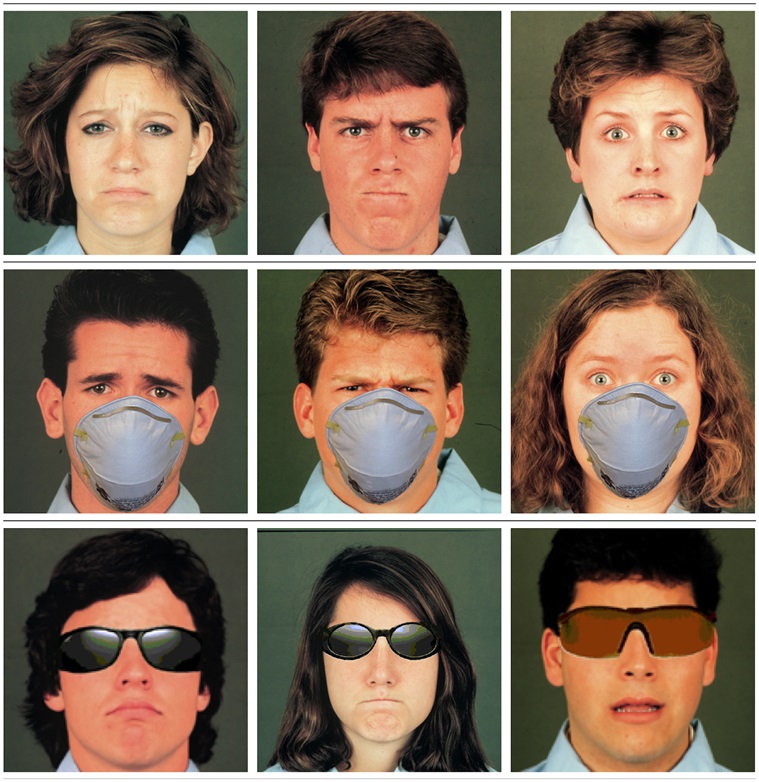[ad_1]
When masks cover a significant part of the face, how well can people understand the facial expressions of the people wearing them? Children can still understand, to an extent, the expressions on masked faces, according to a new study published in PLOS One.
“We now have this situation where adults and kids have to interact all the time with people whose faces are partly covered, and a lot of adults are wondering if that’s going to be a problem for children’s emotional development,” researcher Ashley Ruba said in a statement on the research released by the University of Wisconsin–Madison.
 From left to right: Sadness, anger and fear. (Ashley Ruba, UW—Madison)
From left to right: Sadness, anger and fear. (Ashley Ruba, UW—Madison)
Psychologists at UW–Madison showed more than 80 children, ages 7 to 13, photos of faces that were unobstructed, covered by a surgical mask, or wearing sunglasses. The faces displayed sadness, anger or fear. From a list of six labels, the children were asked to assign an emotion to each face.
When the faces were uncovered, the children were correct as often as 66%. This was well above the probability (about 17% ) of guessing one correct emotion from the six options. With a mask in the way, they correctly identified sadness about 28% of the time, anger 27% of the time, and fear 18% of the time.
“Not surprisingly, it was tougher with parts of the faces covered. But even with a mask covering the nose and mouth, the kids were able to identify these emotions at a rate better than chance,” Ruba said.
Sunglasses made anger and fear difficult to identify, suggesting the eyes and eyebrows are important to those facial expressions. Fear, often confused with surprise, was also the trickiest for children to spot behind a mask.
The faces were revealed to the children slowly, with scrambled pixels falling into their proper place over 14 stages. This was to simulate the way real-world interactions may require piecing things together from odd angles or fleeting glimpses.
Source: University of Wisconsin–Madison
[ad_2]
Source link